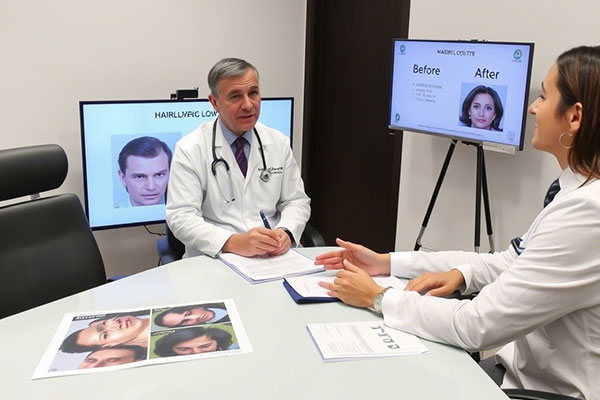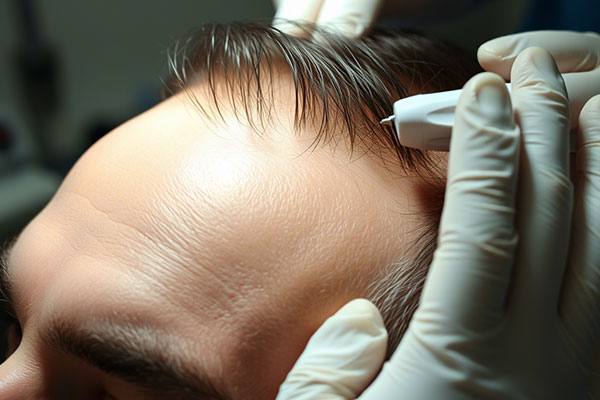Beard to Scalp Hair Transplant in Turkey: The Complete Guide 2025
Beard to Scalp Hair Transplant in Turkey: The Complete Guide 2025
A comprehensive resource for understanding the process, benefits, costs, and results of using beard hair for scalp restoration
Hair loss affects millions of men worldwide, leading many to seek effective restoration solutions. While traditional hair transplants typically use scalp hair from the back of the head, beard to scalp hair transplantation has emerged as an innovative alternative, especially for those with limited donor hair on their scalp. Turkey has become a global leader in this specialized procedure, offering cutting-edge techniques at competitive prices.
This comprehensive guide explores everything you need to know about beard to scalp hair transplants in Turkey, including the procedure, techniques, costs, recovery, and how to choose the right clinic for optimal results.
What is a Beard to Scalp Hair Transplant?
A beard to scalp hair transplant is a specialized procedure where hair follicles are harvested from a patient’s beard area and transplanted to balding or thinning areas of the scalp. This technique has gained popularity as an alternative or complementary approach to traditional scalp-to-scalp transplants.
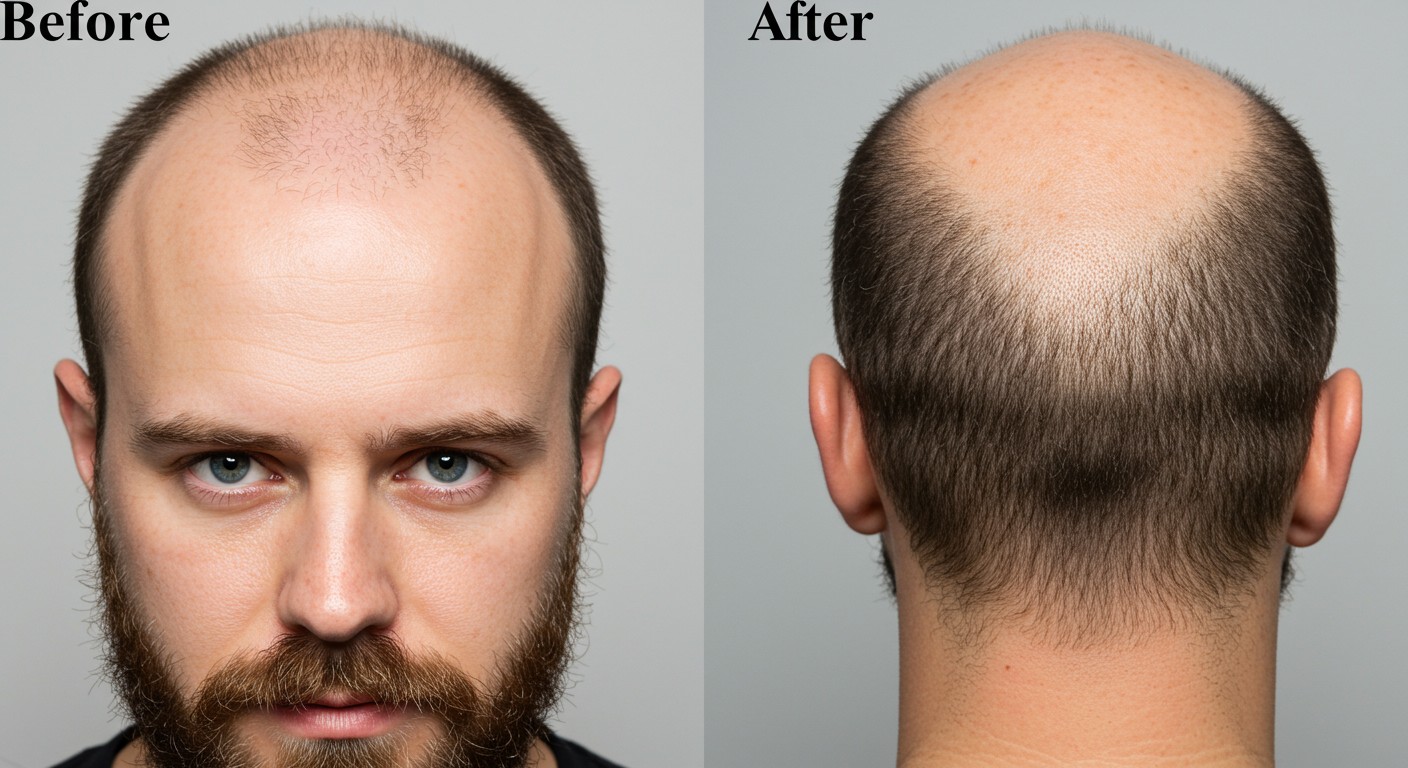
Before and after comparison showing results 12 months after a beard to scalp hair transplant procedure
Why Consider Using Beard Hair for Scalp Transplantation?
Beard hair offers several unique characteristics that make it suitable for certain hair restoration scenarios:
- Additional donor source: Provides extra grafts when scalp donor area is limited
- Coarser texture: Beard hair is typically thicker than scalp hair, providing better coverage with fewer grafts
- Different growth cycle: Beard follicles often have a longer anagen (growth) phase
- Genetic resistance to DHT: Beard hair tends to be less susceptible to the hormone that causes male pattern baldness
Did you know? The male beard area can provide between 600-800 grafts on average, offering a valuable supplementary source of donor hair for transplantation.
Beard to Scalp Transplant Techniques
Two primary techniques are used for beard to scalp hair transplantation in Turkey: Follicular Unit Extraction (FUE) and Direct Hair Implantation (DHI). Both methods have their distinct advantages and are suitable for different patient needs.
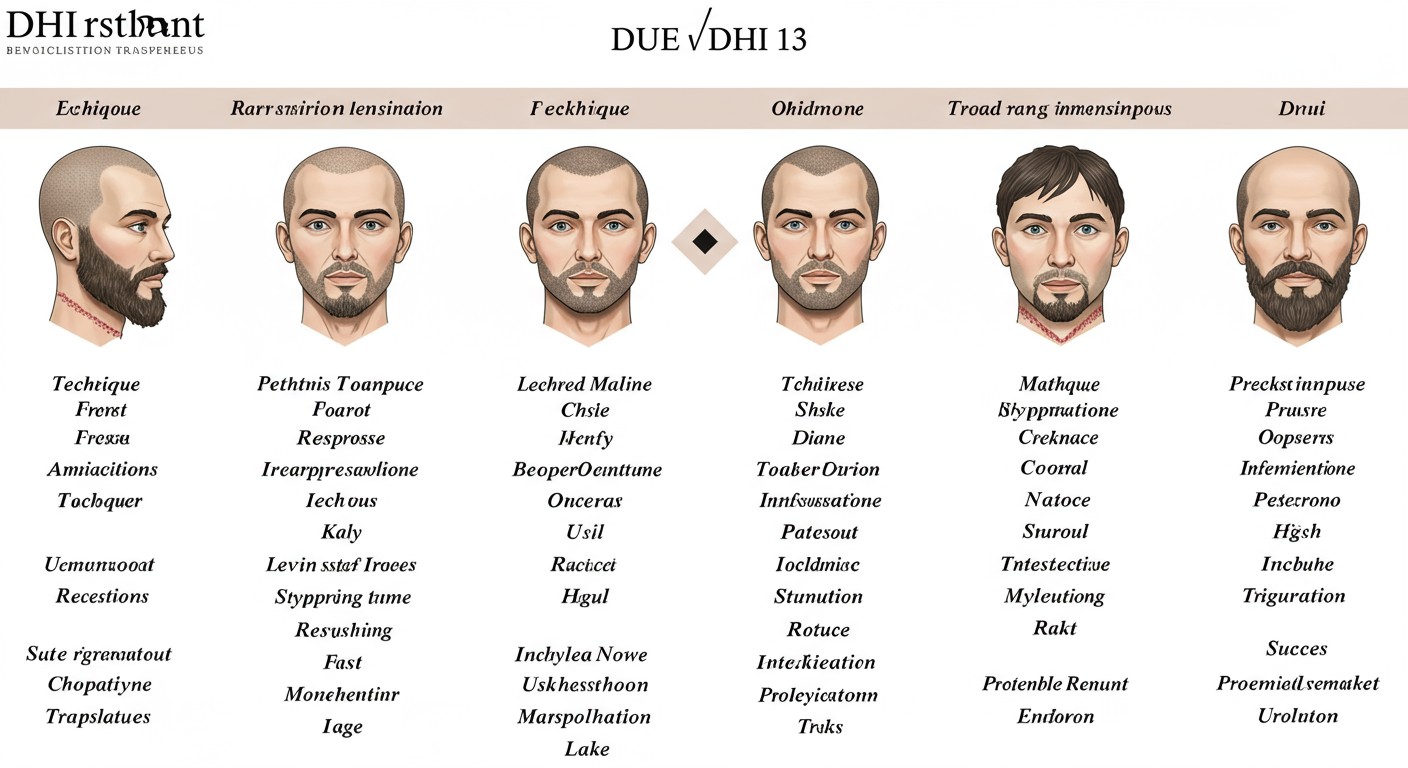
Detailed comparison of FUE and DHI beard to scalp transplant techniques
FUE Technique for Beard to Scalp Transplant
Follicular Unit Extraction (FUE) is currently the most widely used method for beard to scalp hair transplantation in Turkey. This minimally invasive technique involves:
- Shaving the donor beard area
- Extracting individual follicular units using a micro-punch tool (0.7-0.9mm diameter)
- Preparing recipient sites in the scalp using tiny incisions
- Manually implanting the extracted beard hair follicles into the recipient sites
DHI Technique for Beard to Scalp Transplant
Direct Hair Implantation (DHI) represents an advancement of the FUE method, offering greater precision and potentially faster recovery. The DHI process involves:
- Extracting beard hair follicles using specialized micro-tools
- Loading each graft directly into a patented implantation pen called a Choi Implanter
- Simultaneous creation of recipient sites and implantation in one step
- No need for pre-made incisions, reducing trauma to the scalp
FUE Advantages
- Well-established, proven technique
- Generally lower cost than DHI
- Suitable for large areas of transplantation
- No linear scarring in donor area
- Faster procedure time for larger areas
DHI Advantages
- Greater precision for hairline design
- Less trauma to recipient area
- Shorter graft exposure time (better survival)
- No need to shave recipient area
- Potentially faster recovery time
“The choice between FUE and DHI for beard to scalp transplants depends on multiple factors including the extent of hair loss, beard donor capacity, desired density, and budget considerations. A qualified Turkish hair transplant specialist can recommend the most suitable technique based on your individual case.”
The Beard to Scalp Hair Transplant Procedure
Understanding the step-by-step process of a beard to scalp hair transplant can help patients prepare for the procedure and set realistic expectations.
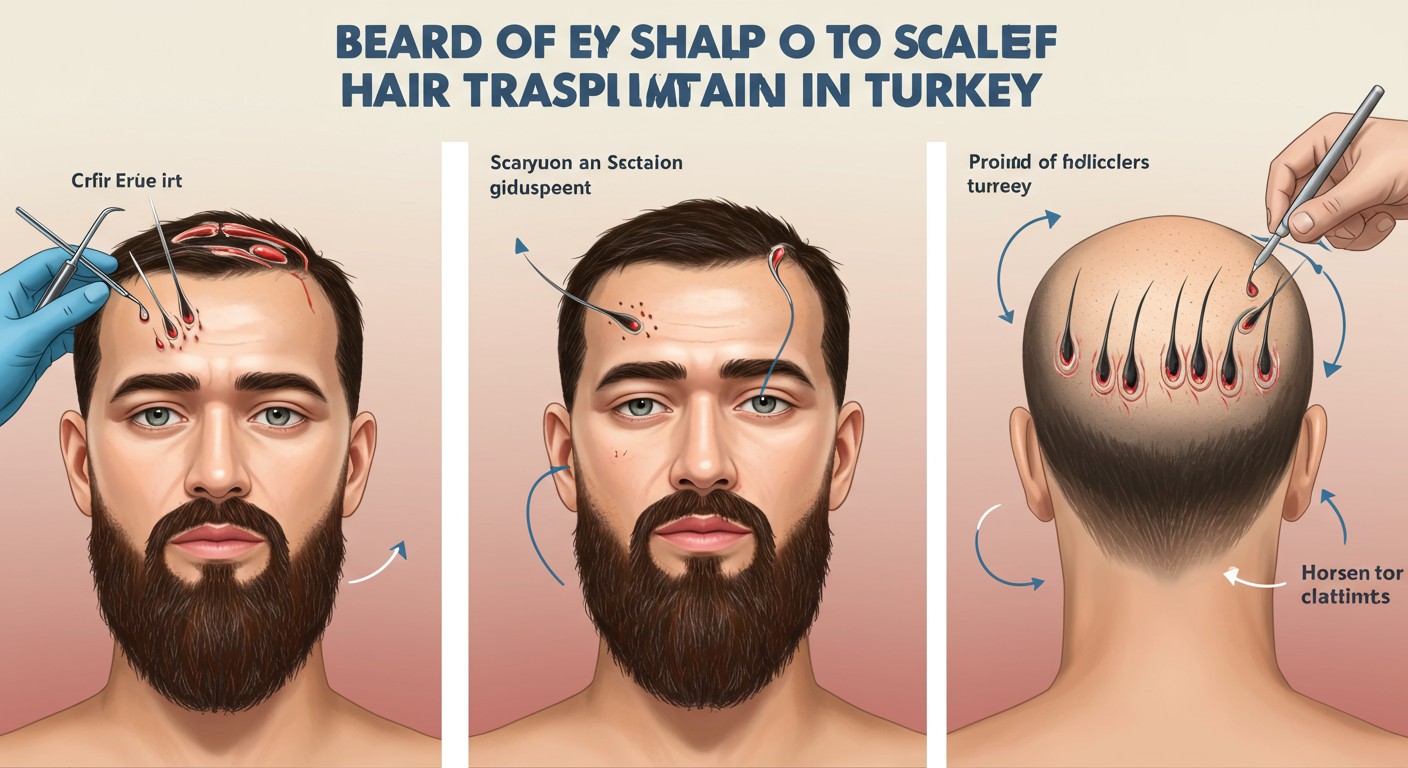
Infographic showing the beard to scalp hair transplant process
Pre-Procedure Consultation and Planning
Before the actual transplant, patients will undergo a thorough consultation process:
- Assessment of hair loss pattern and scalp condition
- Evaluation of beard hair quality and donor capacity
- Digital mapping and design of hairline and recipient areas
- Blood tests to ensure suitability for the procedure
- Discussion of expectations and potential outcomes
Day of the Procedure
A typical beard to scalp hair transplant in Turkey follows these stages:
1. Preparation
The donor area (beard) is trimmed to 1-3mm length for optimal extraction. The patient receives local anesthesia in both the donor and recipient areas to ensure comfort throughout the procedure.
2. Extraction Phase
Using specialized micro-punches (0.7-0.9mm), the surgeon extracts individual follicular units from the beard area. These extractions typically come from the denser parts of the beard, usually under the chin and neck area. Each follicular unit contains 1-2 hair follicles.
3. Graft Preparation
The extracted follicles are carefully sorted, counted, and preserved in a special solution to maintain their viability. Technicians examine each graft under a microscope to ensure quality and remove any damaged follicles.
4. Recipient Site Creation
The surgeon creates tiny incisions in the balding areas of the scalp, following the predetermined hairline design and considering the natural hair growth direction. This step is crucial for achieving a natural-looking result.
5. Implantation
The beard hair grafts are carefully implanted into the recipient sites. With the FUE technique, this is done manually, while the DHI method uses the Choi Implanter pen to place the grafts directly.
The entire procedure typically takes between 4-8 hours depending on the number of grafts being transplanted and the technique used. Most beard to scalp transplants involve 600-800 grafts, though this can vary based on individual need and donor availability.
Important: Beard hair has different characteristics than scalp hair, including coarser texture and different growth angles. Skilled surgeons account for these differences when creating recipient sites to ensure natural-looking results.
Recovery and Aftercare Following Beard to Scalp Transplant
The recovery process after a beard to scalp hair transplant is crucial for ensuring optimal graft survival and achieving the best possible results. Turkish clinics typically provide comprehensive aftercare instructions and support.
Immediate Post-Operative Period (First 3 Days)
- Sleep with your head elevated (30-45 degree angle) to minimize swelling
- Avoid touching, scratching or applying pressure to the recipient and donor areas
- Take prescribed medications (antibiotics, anti-inflammatories) as directed
- Keep both the transplanted area and donor beard area dry for the first 48-72 hours
- Apply cold compresses to the forehead (not on transplanted areas) to reduce swelling
First Week Recovery
During days 3-7 after the procedure:
- Begin gentle washing of both recipient and donor areas using the special shampoo provided by the clinic
- Do not use regular shampoos, soaps, or hair products
- Avoid direct water pressure on transplanted areas
- Refrain from shaving the beard donor area for at least 7-10 days
- Expect some crusting around the transplanted follicles, which is normal
- Avoid strenuous activities, smoking, and alcohol consumption
Weeks 2-4: The Shedding Phase
During this period, patients will experience what is known as “shock loss” – a normal part of the transplant process:
- Transplanted hairs will begin to shed (this is expected and not a sign of failure)
- Crusts around the transplanted follicles will naturally fall off
- The donor beard area will start to heal and regrow
- Gradually return to normal activities, but continue to avoid excessive sun exposure
- Begin using regular gentle shampoo after day 14
Long-Term Recovery Timeline
| Timeframe | What to Expect |
|---|---|
| 1-3 months | The recipient area may appear less dense as transplanted hairs shed. Donor beard area typically returns to normal appearance with minimal visible scarring. |
| 3-6 months | New hair begins to grow from the transplanted follicles. This initial growth may be finer and lighter in color than the final result. |
| 6-9 months | Hair growth becomes more substantial and noticeable. The texture begins to resemble beard hair characteristics (thicker, sometimes coarser). |
| 9-12 months | Near-final results become visible with increased density and coverage. The transplanted beard hair adapts to its new environment. |
| 12-18 months | Final results with maximum density and matured appearance. The transplanted beard hair fully integrates with existing scalp hair. |
Important aftercare guidelines:
- Refrain from smoking or drinking alcohol for at least a few days after the transplant
- Keep your transplant area dry for at least 5 days
- Avoid shaving the donor beard area for at least 8-10 days post-surgery
- Use antibiotics exactly as prescribed by your surgeon
- Attend all scheduled follow-up appointments, whether in-person or virtual
Beard to Scalp Hair Transplant Costs in Turkey
One of the primary reasons patients choose Turkey for beard to scalp hair transplantation is the significant cost advantage compared to Western countries, without compromising on quality.

Cost comparison of beard to scalp hair transplant procedures between Turkey, USA, and Europe
Cost Breakdown in Turkey
In Turkey, the cost of a beard to scalp hair transplant typically ranges from $1,350 to $3,000, depending on several factors:
- Number of grafts: Most beard to scalp transplants involve 600-800 grafts, but this varies by patient need
- Technique used: DHI procedures generally cost 15-30% more than traditional FUE
- Clinic reputation and location: Premium clinics in Istanbul may charge more than those in other cities
- Surgeon expertise: Clinics with internationally recognized surgeons typically command higher fees
- Package inclusions: All-inclusive packages may offer better value but higher upfront costs
International Cost Comparison
| Country | Average Cost (600-800 grafts) | Typical Package Inclusions |
|---|---|---|
| Turkey | $1,350 – $3,000 | Procedure, medications, hotel accommodation (2-3 nights), airport transfers, translator services |
| United States | $7,000 – $15,000 | Procedure and basic medications only |
| United Kingdom | £5,000 – £7,000 ($6,500 – $9,000) | Procedure and basic medications only |
| Germany | €4,500 – €8,000 ($5,000 – $9,000) | Procedure and basic medications only |
What’s Typically Included in Turkish Hair Transplant Packages
Most reputable Turkish clinics offer comprehensive packages that include:
Standard Inclusions
- Pre-operative consultation
- The transplant procedure itself
- Essential medications (antibiotics, painkillers)
- Aftercare products (special shampoo, lotion)
- Post-operative follow-up appointments
Premium Package Additions
- Hotel accommodation (typically 3-4 nights)
- VIP airport transfers
- Interpreter/translation services
- PRP (Platelet-Rich Plasma) treatment
- City tour or additional accommodation
Payment tip: Many Turkish clinics offer payment plans or accept credit cards, but often provide discounts of 5-10% for cash payments. Be sure to inquire about all payment options.
Success Rates and Results of Beard to Scalp Transplants
Understanding the expected outcomes and success rates is crucial when considering a beard to scalp hair transplant in Turkey.
Success Rate Statistics
The success of beard to scalp hair transplants can be measured in several ways:
- Graft survival rate: 80-95% of transplanted beard follicles typically survive and grow in their new location
- Patient satisfaction: Studies indicate 85-90% of patients report satisfaction with their beard to scalp transplant results
- Long-term stability: Approximately 90% of successful transplants maintain results beyond 5 years
It’s important to note that beard to scalp transplant success rates in Turkey are comparable to those in Western countries, despite the significant cost difference. This is largely due to the high volume of procedures performed in Turkey, leading to specialized expertise.
Characteristics of Transplanted Beard Hair
Patients should understand that transplanted beard hair maintains some of its original characteristics when moved to the scalp:
- Thickness: Beard hair is typically coarser than scalp hair, providing better coverage with fewer grafts
- Growth rate: Beard hair often grows more slowly than scalp hair (approximately 1 cm per month)
- Growth duration: The anagen (growth) phase of beard hair is typically shorter than scalp hair
- Texture: Beard hair may have a slightly different texture than surrounding scalp hair
“While beard hair maintains some of its original characteristics after transplantation, over time it adapts somewhat to its new environment and integrates well with existing scalp hair. Skilled surgeons account for these differences in their implantation techniques to create natural-looking results.”
Factors Influencing Success Rates
Several factors impact the success of beard to scalp transplants:
| Factor | Impact on Success |
|---|---|
| Surgeon experience | Highly experienced surgeons achieve graft survival rates of 90-95%, compared to 75-85% for less experienced practitioners |
| Patient health factors | Smoking, poor nutrition, and certain health conditions can reduce success rates by 10-20% |
| Aftercare compliance | Following aftercare instructions precisely can improve graft survival by 5-10% |
| Technique used | DHI may provide marginally better graft survival rates (2-5% higher) than traditional FUE for beard hair |
| Graft handling time | Minimizing the time grafts spend outside the body significantly improves survival rates |
Risks and Potential Complications
While beard to scalp hair transplants in Turkey are generally safe procedures, patients should be aware of potential risks and complications.
Common Side Effects
Most patients experience some temporary side effects, which typically resolve within days or weeks:
- Swelling: Moderate swelling of the forehead and around the eyes for 3-5 days
- Redness: Both donor and recipient areas may appear red for 7-10 days
- Scabbing: Small crusts form around transplanted follicles and shed within 7-14 days
- Itching: As healing progresses, mild to moderate itching in both areas
- Numbness: Temporary numbness in recipient and donor areas for 3-8 weeks
- Shock loss: Temporary shedding of transplanted hairs within 2-4 weeks (normal part of the process)
Less Common Complications
More serious but less frequent complications may include:
- Infection: Occurs in less than 1% of cases, treatable with antibiotics
- Folliculitis: Inflammation of hair follicles, more common in beard donor areas
- Scarring: While FUE minimizes scarring, small white dots may remain visible in the donor beard area
- Poor graft survival: Various factors can lead to lower than expected growth of transplanted hair
- Unnatural appearance: Improper angle or distribution of implanted beard hairs can create unnatural results
- Nerve damage: Rare, but can cause prolonged numbness or altered sensation
Minimizing Risks
To reduce the risk of complications, consider these important factors:
- Choose a reputable clinic with experienced surgeons specializing in beard to scalp procedures
- Disclose all medical conditions, allergies, and medications during consultation
- Follow pre-operative instructions carefully (including avoiding blood thinners before surgery)
- Adhere strictly to all post-operative care instructions
- Attend all scheduled follow-up appointments
- Contact the clinic immediately if experiencing unusual symptoms during recovery
“The risks associated with beard to scalp transplants are similar to those of traditional hair transplants. However, the specialized nature of using beard hair requires additional expertise to achieve optimal results. This makes surgeon selection particularly crucial for this procedure.”
How to Choose the Right Clinic in Turkey
With hundreds of clinics offering hair transplantation in Turkey, selecting the right provider for your beard to scalp procedure requires careful research and consideration.
Essential Criteria for Clinic Selection
Key Factors to Consider
-
Surgeon Qualifications and Specialization
Verify that the surgeon is certified and has specific experience with beard to scalp procedures. Request information about their medical credentials and years of experience in this particular type of transplant.
-
Clinic Reputation and Reviews
Research reviews on independent platforms, forums (e.g., RealSelf, Hair Restoration Network, Reddit), and social media. Look specifically for reviews mentioning beard to scalp transplants rather than general hair transplant reviews.
-
Before and After Documentation
Request authentic before and after photos specifically of beard to scalp cases. Reputable clinics should have a portfolio of previous beard donor cases with similar characteristics to yours.
-
Consultation Quality
Assess the thoroughness of your consultation. The clinic should analyze your beard hair characteristics, scalp condition, and discuss realistic expectations rather than making exaggerated promises.
-
Facility Standards
Ensure the clinic operates in a proper medical facility that adheres to international hygiene and safety standards. Request information about their sterilization protocols and overall facility conditions.
Red Flags to Watch For
Warning Signs
- Significantly lower prices than market average
- Guarantees or promises of specific results
- Reluctance to disclose surgeon credentials
- Pressure to commit without thorough consultation
- No clear aftercare protocol
- Unwillingness to address complications
Positive Indicators
- Transparent pricing without hidden fees
- Realistic discussion of expected outcomes
- Clear communication about procedure limitations
- Detailed pre and post-operative instructions
- Long-term follow-up commitment
- Evidence of specialization in beard to scalp procedures
Questions to Ask During Consultation
- Who will perform the actual extraction and implantation? (The surgeon or technicians?)
- How many beard to scalp transplants has the surgeon personally performed?
- What is the anticipated graft survival rate for my specific case?
- How does the clinic handle potential complications or suboptimal results?
- Will the procedure be performed in a single session or multiple sessions?
- What specific aftercare support is provided after returning home?
- Can I speak with previous patients who had similar procedures?
- What is included in the quoted price and what might incur additional fees?
Pro tip: Request a video consultation with the actual surgeon who will perform your procedure, not just a clinic representative. This gives you the opportunity to assess their communication style, expertise, and willingness to address your specific concerns.
Latest Innovations in Beard to Scalp Transplantation
The field of hair transplantation is constantly evolving, with new techniques and technologies improving outcomes for beard to scalp procedures.
Advanced Techniques and Technologies
- Sapphire FUE: Uses blades made of sapphire rather than steel for creating recipient sites, resulting in smaller incisions, less trauma, and potentially quicker healing.
- FUEsion X System: Combines robotic assistance with AI-powered 50x magnification cameras and augmented reality glasses to enhance precision during both extraction and implantation phases.
- Automated Graft Counting: Digital imaging systems that accurately count and classify hair grafts, ensuring precise distribution and documentation.
- Hypothermic Graft Preservation: Advanced storage solutions that better preserve follicle viability during the time between extraction and implantation.
- Specialized Beard Hair Extraction Tools: Micro-punches specifically designed for the unique angle and depth of beard follicles, reducing trauma and improving extraction efficiency.
Complementary Treatments
Many Turkish clinics now offer additional treatments to enhance beard to scalp transplant results:
- PRP (Platelet-Rich Plasma): Injecting concentrated platelets from the patient’s own blood to stimulate healing and growth. Studies suggest PRP may improve graft survival by 15-20%.
- Low-Level Laser Therapy (LLLT): Using low-power lasers to potentially enhance cellular activity and promote faster healing and growth.
- Stem Cell Therapy: Experimental approaches using adipose-derived stem cells to potentially enhance graft survival and integration.
- Specialized Aftercare Products: Development of custom formulations designed specifically for transplanted beard hair, addressing its unique characteristics.
Emerging Research and Future Directions
Research continues to advance the field of beard to scalp transplantation:
- Studies on optimizing beard hair adaptation to scalp environments
- Development of improved extraction techniques specific to beard follicle architecture
- Long-term data collection on beard hair transplant outcomes beyond 5-10 years
- Exploration of partial beard follicle harvesting for improved donor site aesthetics
“The future of beard to scalp transplantation lies in greater customization and precision. As we better understand the unique characteristics of beard hair and how it behaves when transplanted to the scalp, we can refine our techniques to achieve increasingly natural results with faster recovery times.”
Conclusion: Is a Beard to Scalp Hair Transplant in Turkey Right for You?
Beard to scalp hair transplantation in Turkey offers a viable solution for individuals seeking to address hair loss, particularly those with limited scalp donor hair or those wishing to preserve their scalp donor area for future procedures.
Key Takeaways
- Turkey offers world-class beard to scalp transplant procedures at 70-80% lower costs than Western countries
- The procedure achieves 80-95% graft survival rates, comparable to results in other countries
- Both FUE and DHI techniques are effective, with selection depending on individual needs
- Beard hair provides excellent coverage due to its coarser nature, though it maintains some of its original characteristics
- Recovery typically takes 10-14 days for initial healing, with final results visible after 12-18 months
- Selecting the right clinic and surgeon is crucial for optimal outcomes
Is This Procedure Suitable for You?
Beard to scalp hair transplantation may be particularly suitable for:
- Men with limited scalp donor hair availability
- Patients wanting to strategically preserve scalp donor hair for future procedures
- Individuals seeking increased density in specific areas of the scalp
- Those who desire the unique coverage characteristics of beard hair
- Patients looking for cost-effective hair restoration solutions
Ready to Explore Your Options?
The first step is consulting with qualified specialists who can assess your specific needs and determine if a beard to scalp transplant is right for you.
Research reputable clinics in Turkey, request virtual consultations, and gather information to make an informed decision about this life-changing procedure.
References and Further Reading
- International Society of Hair Restoration Surgery (ISHRS). “Beard Transplant Information.” https://ishrs.org/beard-transplant/
- Dr. Serkan Aygin Clinic. “All You Need to Know About Beard to Head Hair Transplant.” https://www.drserkanaygin.com/blog/all-you-need-to-know-about-beard-to-head-hair-transplant/
- Cosmedica Clinic. “Beard Transplant Turkey.” https://cosmedica.com/beard-transplant-turkey/
- Parsa Mohebi Hair Restoration. “Beard to Scalp FUE Hair Transplant – Pros and Cons.” https://parsamohebi.com/resources/publications/beard-scalp-fue-hair-transplant-pros-cons/
- North Atlanta Hair Restoration. “Beard to Head Hair Transplant: Benefits & Procedure.” https://www.nahairrestoration.com/what-is-a-beard-to-head-hair-transplant/
- Wimpole Clinic. “Beard Transplant Aftercare and Post-Op Itch.” https://wimpoleclinic.com/blog/beard-transplant-post-op-itch-get/
- Dental Hair Clinic Turkey. “Body Hair to Head Transplant in Turkey.” https://www.dentalhairclinicturkey.com/blog/body-hair-transplant/
- Dr. Anthony Bared. “Beard Transplant Risks You Should Be Aware.” https://www.facialplasticsurgerymiami.com/blog/beard-transplant-risks-you-should-be-aware
- Hayat Med. “13 Top Tips To Find The Best Turkish Hair Transplant In 2024.” https://www.hayatmed.com/blog/hair-transplant/fue/best-hair-replacement-doctors/
- Este Medical Group. “Turkey Beard Transplant Clinic.” https://www.estemedicalgroup.com/beard-transplant-turkey



